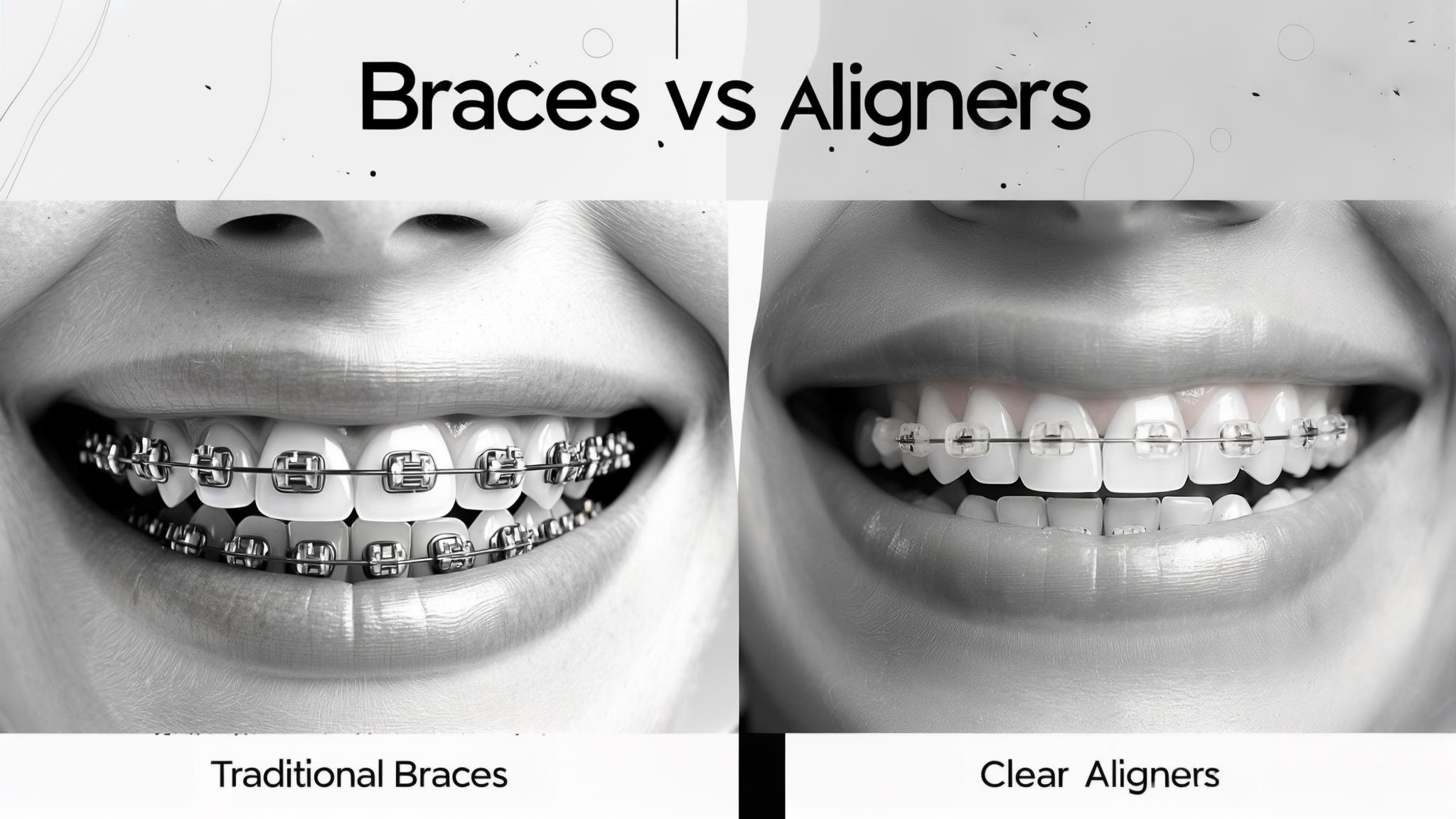Orthodontics: A Path to a Perfect Smile
Orthodontics is a specialized field of dentistry that focuses on correcting irregularities in teeth and jaws. When we talk about orthodontics, we're essentially discussing the art and science of aligning your teeth for better oral health and a more pleasing appearance. Straight teeth are not just about looking good; they play a crucial role in your overall oral health by making it easier to clean your teeth and reducing the risk of gum disease and tooth decay.
In this article, we'll delve into two popular orthodontic treatments: braces and aligners. By understanding the ins and outs of each, you'll be better equipped to make an informed decision about which option might be best for you.
Understanding Braces
Braces have been around for decades and are a tried-and-true method for straightening teeth. They consist of several components:
- Brackets: Small squares bonded to the front of each tooth.
- Archwires: Wires that connect the brackets and guide the teeth into place.
- Bands: Metal rings that encircle the molars to provide additional support.
How Braces Work
Braces work by applying continuous pressure over time to slowly move teeth in a specific direction. As teeth move, the bone changes shape to accommodate the new position. Treatment duration varies but often ranges from 18 months to 3 years, depending on the complexity of the case.
Types of Braces
- Metal Braces: The most common type, made of high-grade stainless steel.
- Ceramic Braces: Similar to metal braces but with tooth-colored or clear brackets.
- Lingual Braces: Placed on the back of the teeth, making them less visible.
Understanding Clear Aligners
Clear aligners offer a modern alternative to traditional braces. They are made from a special thermoplastic material and are custom-made to fit snugly over your teeth.
How Clear Aligners Work
Aligners work by using a series of custom-made, removable trays that gradually shift teeth into the desired position. Each set is worn for about two weeks before moving on to the next one in the series. Treatment duration can vary, but typically lasts between 12 to 18 months.
Popular Brands
One of the most well-known brands of clear aligners is Invisalign, but several other brands offer similar products, each with unique features.
Pros and Cons of Braces
Advantages
- Highly effective for complex orthodontic cases.
- No compliance issues since they are always on.
- Available in various styles, including colorful options for personalization.
Disadvantages
- Can be aesthetically unappealing for some.
- May cause discomfort, especially during adjustments.
- Require dietary modifications to avoid damaging the braces.
- Pose challenges for maintaining oral hygiene.
Pros and Cons of Clear Aligners
Advantages
- Nearly invisible, offering a more aesthetically pleasing option.
- Generally more comfortable and cause less irritation to gums and cheeks.
- Can be removed for eating and cleaning, allowing for better oral hygiene.
- Often require fewer visits to the orthodontist.
Disadvantages
- Require strict compliance to be effective, needing to be worn 20-22 hours a day.
- May not be suitable for severe orthodontic issues.
- Can be more expensive than traditional braces.
Comparison of Treatment Outcomes
Effectiveness
- Mild to Moderate Cases: Both braces and aligners are effective.
- Severe Cases: Braces are often more suitable due to their strength and precision.
Timeframes
Treatment times can vary, but aligners might offer quicker results for mild cases.
Post-Treatment Retention
Both options require retainers post-treatment to maintain the new position of teeth.
Cost Considerations
Average Costs
Braces typically range from $3,000 to $7,000, while clear aligners can cost between $4,000 and $8,000.
Insurance Coverage
Insurance plans vary, but many cover a portion of orthodontic treatments. It's best to check with your provider.
Long-Term Investment
Investing in orthodontic treatment can improve oral health and prevent future dental issues, making it a worthwhile consideration.
Conclusion
Choosing between braces and aligners depends on individual needs and circumstances. While braces might be better for complex cases, aligners offer a discreet and comfortable option for many. It's essential to consult with an orthodontist to determine the best path for your smile.
References
For further reading, consider exploring resources from the American Association of Orthodontists and studies published in journals like the American Journal of Orthodontics and Dentofacial Orthopedics. These can provide more detailed insights into orthodontic treatments and advancements.

